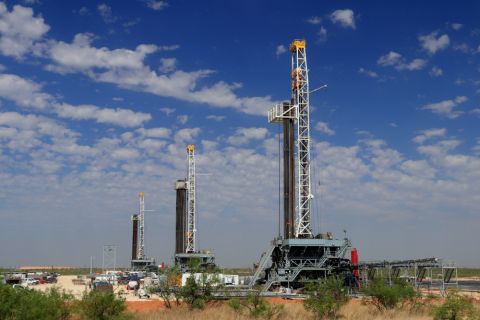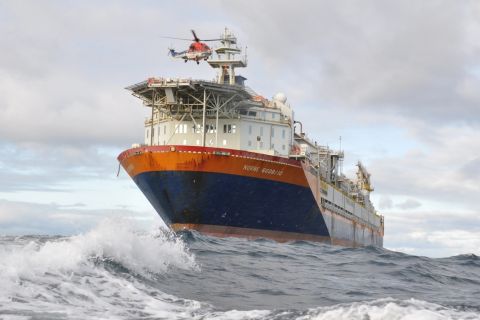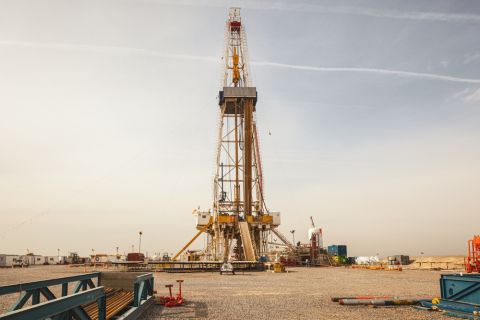
(Source: Hart Energy; Shutterstock.com)
[Editor's note: A version of this story appears in the July 2020 edition of Oil and Gas Investor. Subscribe to the magazine here.]
Any meeting involving money is a significant business, perhaps more so for a private-equity firm and its backers. In April, as the COVID-19 pandemic continued to weaken oil demand and shutter the United States, Billy J. Quinn, managing director at Pearl Energy Investment, met with the private-equity firm’s limited partners.
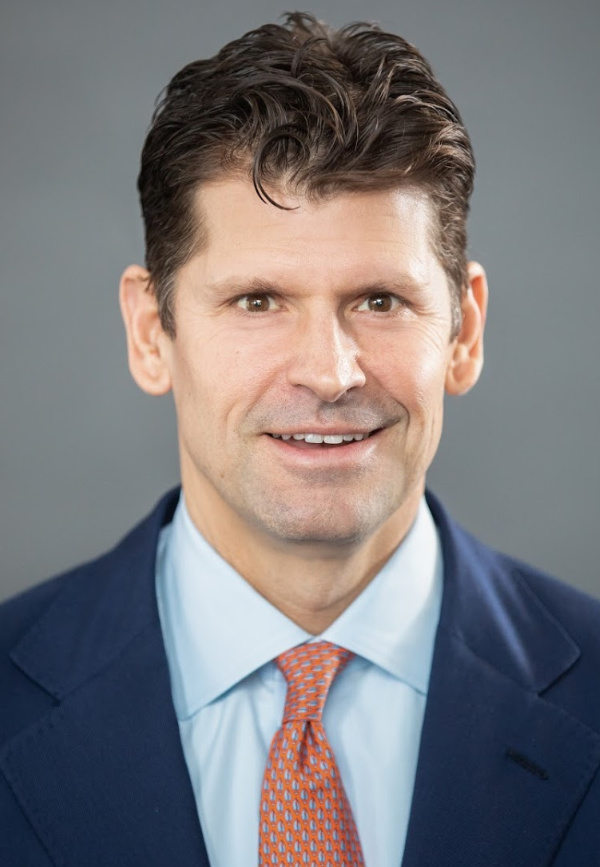
Quinn began his assessment of his portfolio companies and the world of oil and gas by deliberately bypassing the pandemic. Quinn’s aim was for Pearl’s investors to see what he’d been seeing, starting from where the firm had left off in 2019. It wasn’t, Quinn said, “a banner year for the oil and gas business.”
Untangling the COVID-19 mess will take time, Quinn said. First, he wanted to drive home a point. “I wanted to have the right frame of reference,” he said. “And 2019 stunk. It didn’t feel like this was a great business. And we averaged $57 oil. But that allowed most of our companies to be prepared for what happened in March.”
If there’s a unifying point of view in the private-equity world, it’s that pragmatism gets results, and hope is the equivalent of hemlock. For too long, as private-equity players see it, a group of fragile E&Ps have been struggling to survive as they waited—or hoped—for oil prices to rise.
The pandemic has effectively snuffed out magical thinking.
Jordan Marye, who leads Denham Capital’s oil and gas segment, said that asset owners will ultimately have to face an emotional but practical question: “What do we own? How broken is it?”
“Because everything is some version of broken below $40 oil,” Marye said. “The key decision then becomes what do you dispose of— via bankruptcy or restructuring—and what things do you hang onto?”
Private-equity players from Pearl, Quantum Energy Partners, Denham Capital, EnCap Investments LP and Warburg Pincus largely agree along these lines: The industry was wobbly before the pandemic. With some hard and difficult work, it can stand again.
The firms also recognize they’re part of a pool of potential buyers—among the few— with billions of dollars at their disposal.
Though M&A is on the menu, the wait times could be murder. Some private-equity firms are already kicking the tires of potential deals, but they largely see the industry’s recovery from the pandemic crash in terms of months or even years. They’ll be opportunistic, but only for the right assets—proved developed producing (PDP), cash flow and quality. Most see no upside in undeveloped acreage, except as an afterthought.
“This asset class, oil and gas for the past 15-plus years, has been money chasing deals. For the first time in my career, it’s deals chasing money.”
—Jordan Marye, Denham Capital
The pandemic didn’t so much interrupt the plans of those companies as further erode already shaky ground. As the bottom falls out from underneath E&Ps, private-equity funds will be ready to take advantage of upstream and midstream assets with little foreseeable competition.
While private-equity has its own kinks to work out, it’s also planning to move aggressively but responsibly as distressed E&Ps begin to capsize.
David S. Habachy, a managing director and member of the Warburg Pincus energy team, said he sees this as a time for potential opportunities in the market.
“We’re actually looking to do business and invest in attractive opportunities that arise in this environment,” he said.
The companies have proven resilient in the face of the COVID-19 outbreak, in part because they’re well-hedged and carry modest leverage, he said.
Habachy said he expects some private-equity firms to wind down and consolidate companies that were challenged prior to the pandemic and have “no visible runway or meaningful option value.”
Like other oil and gas companies, private portfolio companies have not been spared from the pain of cratering oil and gas demand declines that set the industry on edge in March.
“Our near-term focus has been on liquidity and survival, and I think that’d be true among the public and private universe,” said Brad A. Thielemann, a partner at EnCap Investments LP. “We had 18 rigs running in our portfolio in January, and we’re down to zero now.”
Roughly 80% to 85% of EnCap’s rig activity was tied to oil-weighted projects, and more than half of its rigs were running in the Permian Basin.
“The first thing we did from a defensive standpoint was to halt activity where we didn’t think it made economic sense,” he said. “You’re starting to clearly see a lot of shut-ins over the last month with prices moving down significantly, particularly on a regional basis.”
Across the industry, Thielemann said companies have been forced to shrink from a cost cutting and an activity standpoint. And that’s still an ongoing process.
And industry leverage has clearly been magnified at current pricing.
“You’re seeing some restructurings that were maybe headed that way anyway being accelerated, and there is quite a bit more to come,” he said. “In the near term, there’s no quick way out.”
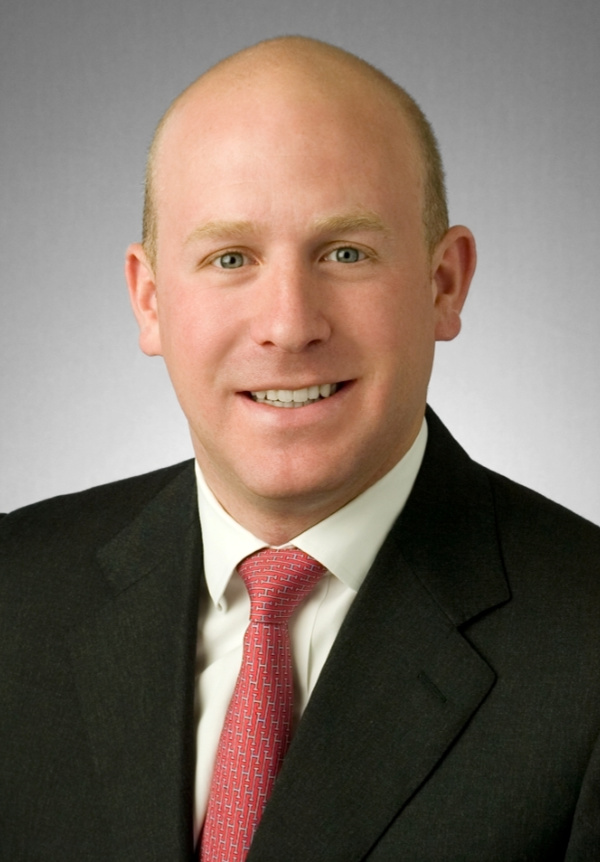
Pearl, for instance, said its portfolio is in solid shape. The bulk of its investments are in high quality assets with great teams, low to no leverage and lots of hedges, Quinn said.
Still, Pearl had some immediate cleaning up to do within its own portfolio.
“We’re not unscathed,” he said. “Nobody is. We’ve had a few headaches to deal with. But we’ve been fortunate that they’ve been smaller dollar issues. We’re doing our best to fix them and that they can survive another 24 months.”
Still, in a worse-case scenario, some of those companies may not survive and get merged with other Pearl portfolio companies.
“That’s just a function of the market we are in today.”
Wake-up time
Over the past several years, Quantum Energy Partners has taken a far more cautious approach to the energy market than its peers.
It’s why the company will be looking more closely at opportunities now that sellers may have no other choice than to part with assets to survive.
Quantum’s approach was born out of a realistic view of the world’s supply and demand dynamics, said Quantum president Dheeraj “D” Verma.
For Verma, the current state of distress started in 2014, when OPEC first decided to flood the market with oil, and it didn’t really end. The industry’s bumpy ride since has been partly due to “flashes of optimism” that don’t square with reality.
“If you step back and think about it, people were constantly projecting the V-shape recovery. I’m talking mostly about the capital market. These debt and equity investors … have bailed out the industry so many times.”
Quantum continued to be selective, cautious and careful.
Now, with the pandemic acting as a kind of cataclysm for oil and gas, E&P company investors hold stock or debt worth a fraction of what it was issued at.
“A lot of companies issued and refinanced a lot of debt in the capital markets. Again, most of which is trading at fractions of what it was issued at,” he said. “And then a lot of companies are buying back their shares. So you can see just from 2014, the industry continues to suffer from this optimism despite the facts.”
Quantum hasn’t been willing to make transactions on what it considered ill-priced assets.
“In the last 18 months, we haven’t bought much of anything,” he said. “We have not been able to transact on anything because we would bid up some asset or business, and we would have a cautious commodity outlook on it.”
Yet there were always other buyers willing to bid more while projecting crude oil to be $60, $70 or $80 per barrel.
“I think people just want to believe in the upside,” he said.
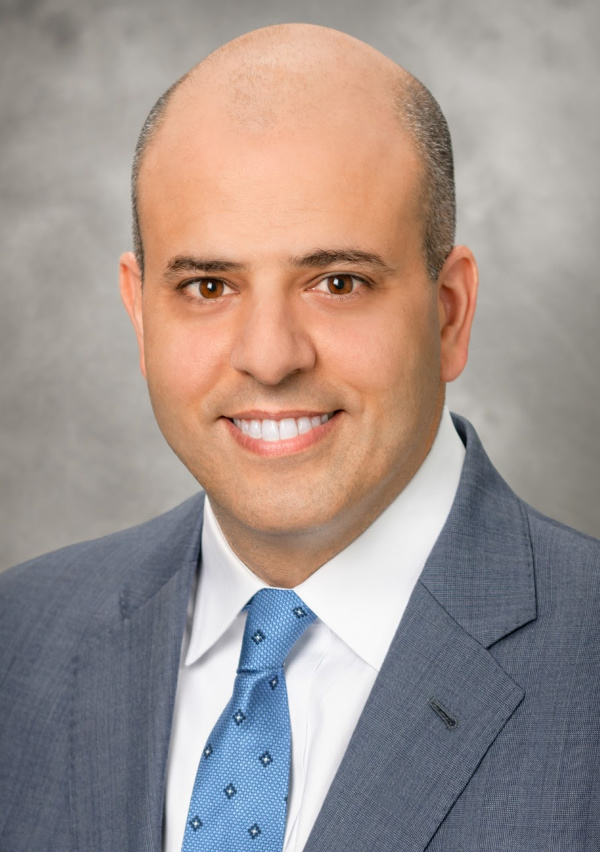
Production is already being shut in, and companies are rationalizing staff; many appear to be struggling.
“That’s what the industry has needed since 2012. And we’ve not had the kind of endogenous [catalyst] to force that outcome,” he said.
Curtis Flood, a managing director at Evercore, said companies are trying to manage high debt levels and reduced cash flows by employing either out-of-court liability management transactions to amend bank covenants, defer debt maturities and opportunistically capture some debt discount. Or they’re turning to in-court restructurings to equitize their balance sheets.
Selling off assets piecemeal into a depressed A&D market to pay back creditors at cents on the dollar is seen as only a last resort.
Evercore has been involved in the surge of oil and gas restructurings since the pandemic stifled oil demand and OPEC+ initiated a price war. The firm is currently advising on about 20 energy restructurings totaling more than $60 billion in debt. A combination of liabilities and steep declines in oil and gas demand have already resulted in Whiting Petroleum Co., Diamond Offshore Drilling Inc., and Ultra Petroleum Corp. seeking bankruptcy protection for a collective $9.7 billion in debt.
“We’re seeing a restructuring wave now that will likely continue for at least the next 12 to 24 months,” Flood said. “And on the back end of that, those companies that have gone through Chapter 11 and equitized their balance sheets will be controlled by a new group of equity owners who are going to be interested in consolidation—getting to scale, driving efficiencies, realizing synergies and de-risking the business model in order to survive in a very volatile market.”
Prelude to M&A
The market and the environment for opportunities is of natural appeal to Pearl. The company is well stocked with dry powder, with about 70% of its $1.2 billion fund uncommitted.
Yet the mood is still muted.
“Even though we’re opportunistic, and we’re trying to look at the bright side,” he said, “it’s still really hard to feel good at times. This is one of those odd times that, because we’re all navigating uncharted waters, it’s really hard to feel aggressive.”
M&A may be on private-equity leaders’ minds, but it’s not necessarily what they expect to race toward.
“The demand destruction is so deep. You begin to see things shaken up and wake up to the fact that as a business we all need to be more deliberate and cautious on how we deploy capital.”
—Dheeraj “D” Verma, Quantum Energy Partners
While some deals will present themselves, the M&A market has nearly gone dark. In the next 18 to 24 months, many private-equity sponsors expect distress, bankruptcy and deals, as well as companies that are well positioned to survive.
Within a year, a large portion of the oil and gas market “won’t exist in the form that it existed prior to … the COVID-19 crisis,” Quinn said.
Thielemann said that as EnCap surveys the situation, they see an overall lack of capital that presents challenges and, eventually, opportunities.
“We can’t tell you exactly when, but our view is that well-capitalized survivors or private companies that have access to capital really should be in a great position to thrive on the other side” of the pandemic.
The timing for deals, however, is difficult to predict.
“I don’t think there are any quick, sustainable fixes to the supply and demand issues in the near term,” he said. “So we’re probably in a slower, longer recovery. But hopefully with a continued focus on profitability over growth, we will come out the other side with an energy industry, in particular in the E&P space, that’s healthier and has an ability to generate returns.”
Quinn divides E&Ps into two basic camps: the “haves” and “have-nots.”
The have-not producers share some common traits: poor hedging, some or abundant debt and a relentless struggle to stay afloat over the next several months.
“Many of them won’t survive,” Quinn said. “They’ll get restructured, recapitalized, bought, merged. A whole number of things can happen to these companies, but they won’t survive in their current form.”
In the opposite camp are a “handful” of public and private companies that have great hedges in place this year and in 2021. These companies have no or low debt and can watch the market opportunistically.
“Hopefully with a continued focus on profitability over growth, we will come out the other side with an energy industry, in particular in the E&P space, that’s healthier and has an ability to generate returns.”
—Billy Quinn, Pearl Energy Investments
“And look to try to grow through acquisitions—pick off assets at distressed price levels. They can clearly be the winners of what’s gone on in the past two to three months,” he said.
Eventually, those businesses will get cleaned up over the next couple of years, Quinn said.
“You’ll have winners, and you’ll have losers from this cleanup,” he said. “But it’s going to take a few years. I think it’s going to take some time for demand to come back to where it was.”
Deals chasing money
In Denham Capital’s view, the market has turned on its head.
The firm exited 2019 with the least amount of money it had invested in the ground during the past 10 years. The company had also sold a “fair amount” of its existing portfolio, Marye said.
“We had an opportunity to sell more things than buy, and we had a really hard time finding great values in the past two to three years,” he said. “So, we came into this year underinvested, which ended up being fortunate.”
Since the commodity price crash, Marye said he’s seen an abrupt reversal in buyer-seller dynamics.
“This asset class, oil and gas for the past 15- plus years, has been money chasing deals,” he said. “For the first time in my career, it’s deals chasing money. We just have to be patient and let the physics of the market work themselves out.”
The task now is for Denham’s teams to set the table for what they want to own, how they want to own it and to stay patient. However, the waiting period may be months.
Denham, which raised $900 million in commitments in 2017, plans to invest its remaining capital evenly between E&P and midstream.
In the meantime, Denham has focused on finding opportunities to invest its callable capital.
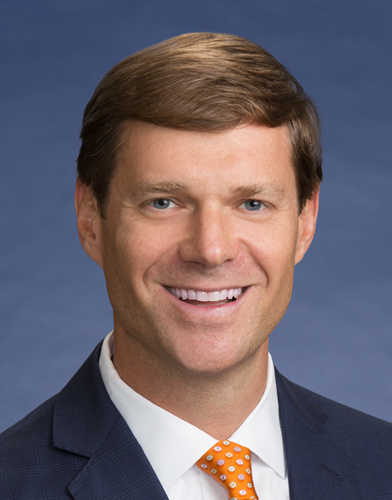
we’re down to zero now.”
“What we’ve been on for the past eight weeks is essentially a shopping spree,” albeit one that largely involves window shopping so far.
Marye says asset owners are not at the point of action today. But looking ahead, it’s clear there will be “a fairly significant wave of asset restructuring in the third and fourth quarter of this year and all of 2021.”
The future timing for those deals is a matter of debate for many private-equity sponsors, including Denham. Pandemic or not, Denham is still eyeing oil and gas assets from the simple business point of view: Does it make money when revenue is accurately predicted and after all expenses are taken into account?
Other private-equity firms similarly stressed a willingness to buy—but only for more mature, brownfield development that’s scalable and has cash flowing assets.
Verma said the natural inclination in times of distress leads to “trying to buy low and sell high. That’s kind of the age-old concept that a lot of private investors are seeking.”
He takes a broader view of the topic. While the price matters, he’s most interested in buying tier-one acreage. Companies, he said, are still trying to sell some of their tier-two and tier-three assets.
“We’re not interested in a cheap price for a tier-three asset or a tier-two asset,” he said. “We’d rather pay a fair price, but we need to get a tier-one asset that we can do something with.”
Quantum is careful not to predicate its purchasing strategy on prices, and Verma noted that oil could be low-priced for the next three years.
“We are very eager to buy today, and frankly we have a lot of capital available to us while many other firms may have less of that available,” he said.
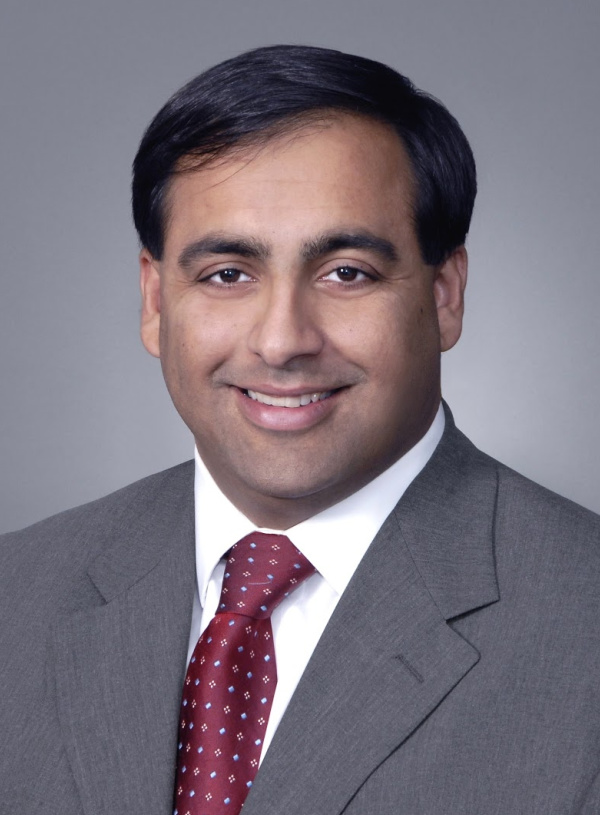
While Quantum hasn’t engaged in any large deals over the past couple of months, the firm has engaged in four or five partnerships with public companies to jointly develop their assets. Quantum was preparing two new deals in May, including another partnership with a public company and a $60 million acquisition of core, tier-one assets from a company that intends to use the proceeds for debt reduction.
“I think for us the key thing is that we don’t want to change our stripes. A lot of people get tempted to change their stripes when there’s volatility,” Verma said.
Verma, for instance, said Quantum stayed back from special purpose acquisition corporations and other “flavor of the month” vehicles.
“The keyword is discipline,” he said. “That’s what we find: fight that temptation and focus on our business.”
While oil prices have recovered somewhat, they’re still too low to resolve the problems many highly leveraged oil and gas companies face—particularly those companies that were already strained in a $45 or $50 WTI world.
Habachy said the “bar will be high” for Warburg Pincus when it comes to pursuing opportunities.
“My sense is you’re really going to see things play out in the back half of this year or even in 2021, when prices stabilize and the dust settles,” he said.
Warburg Pincus considers entry price and risk profiles associated with an asset and whether they can eventually achieve a growing and scalable business that generates cash flow. Beyond that, the type of commodity and asset is largely immaterial, with a good balance of oil and gas assets already in the portfolio.
“We really prioritize efforts that are predictable and that could be underwritten with a high degree of certainty and confidence,” he said.
What the firm doesn’t intend to pursue is raw acreage. The right deal will have a combination of optionality with wellbores and potential reduced operating costs. Potential targets will have to be established cash flow generators.
“We will be more focused on what we refer to as brownfield, so more mature assets that still have upside and will come with a lot of predictability,” he said.
The prudent
Pearl is already engaged in looking at some deals, and Quinn said the firm is bidding on things cautiously because of the extreme volatility.
Pricing assets appears to be equally difficult for buyers and sellers. Sellers want what they consider fair value. Buyers are trying to quantify what an asset, potentially with shut-in wells, could produce in revenue, all under the light of a badly disturbed commodity market.
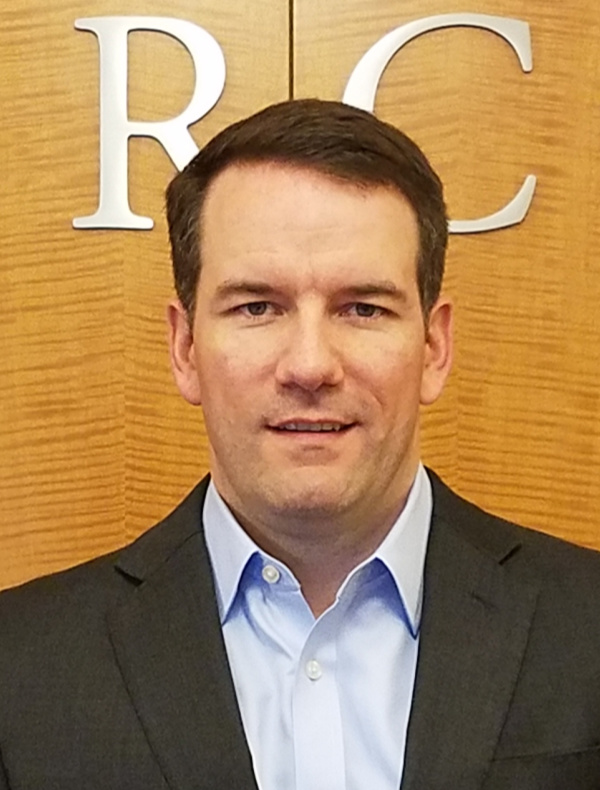
To some extent, the uncertainty of pandemics and fiscal devastation have made sellers and buyers gunshy.
“If you’re bidding on an asset that was PDP heavy, you never modeled in or even really thought there was a risk that your PDP volumes for the next three months could go to zero because you’ve got to shut in production,” Quinn said. “There are a lot of unique things you have to think about in this market, even when buying something as simple as long-lived production.”
Thielemann said higher and more sustained price levels would start to move the market, but for now EnCap, like all interested parties, said looking at the front month price of oil isn’t useful.
“There’s not necessarily a magic number where everything is going to turn back on. I think you’re going to want to see sustained oil prices in the $40 to $50 range and a forward curve that you want to hedge into before we move into a development mode,” he said. “You definitely would want to see a less volatile price environment.”
EnCap, with about $6 billion in its more recent funds available to be put to work, is also looking at deals and brushing aside the urge to move fast rather than prudently.
“We spend a lot of time talking about being patient and disciplined and opportunist,” he said.
However, Thielemann said it’s difficult to know when and how oil demand will recover.
“We focus on high quality assets, and we want to capitalize the opportunity properly, which means a low amount of debt and certainly less than was traditionally acceptable,” he said. “There also has to be a low cost structure and a management team that can execute and be nimble.”
In some ways, it’s the same type of combinations that EnCap always looks for, though ensuring the pieces fit together appears to be more important. Also, the firm isn’t searching for opportunities that only pay off in dramatically improved price environments.
“You want to make sure you have liquidity and an asset that will endure through the cycle yet still have option value on the other side,” he said.
Expanding beyond traditional asset opportunities, EnCap has also been looking at opportunities to help troubled companies with quality assets repair their balance sheets.
Quantum, likewise, has been in talks with a creditor group to help bring in new money to help restructure the business.
However, Verma said most distressed companies appear to have tier-two or tier-three assets that aren’t of interest to Quantum.
“There are a few distressed companies that have really good assets,” he said. “Those are the ones that we’re spending time on.”
Pearl’s investments are split between conventional and unconventional assets.
Quinn said Pearl will look for PDP heavy acquisitions, and creative corporate deals, though those can sometimes become complicated.
“Today, we’re looking at assets or companies going into bankruptcy. And for us, E&P and midstream are our focus areas,” he said.
Quinn said purchases will be skewed toward returns on cash that are based on production.
“The upside return on the asset has to look good enough to justify as we navigate these murky waters,” he said.
Unconventional shale production brings its own set of challenges because further outbreaks of COVID-19 are possible and may alter broader demand needs, he added.
Predicting how to operate short-lived assets and how oil markets move month to month over the next 12 to 24 months seems thornier.
Given the steep decline rates of some shale wells, “How do you underwrite it? Because the economic decision you’re making is completely contingent on what happens in the next 12 to 24 months, which is a very hard way to build a business,” Quinn said, adding “Every time I hear somebody who has a strong opinion about what’s going to happen based on COVID-19, I kind of laugh because nobody knows. We’re all learning this as we go along.”
Recommended Reading
E&P Highlights: May 13, 2024
2024-05-13 - Here’s a roundup of the latest E&P headlines, with a couple fields coming online, as well as new contract awards.
SM Energy Targets Prolific Dean in New Northern Midland Play
2024-05-09 - KeyBanc Capital Markets reports SM Energy’s wells “measure up well to anything being drilled in the Midland Basin by anybody today.”
Vår Selling Norne Assets to DNO
2024-05-08 - In exchange for Vår’s producing assets in the Norwegian Sea, DNO is paying $51 million and transferring to Vår its 22.6% interest in the Ringhorne East unit in the North Sea.
Crescent Energy: Bigger Uinta Frac Now Making 60% More Boe
2024-05-10 - Crescent Energy also reported companywide growth in D&C speeds, while well costs have declined 10%.



